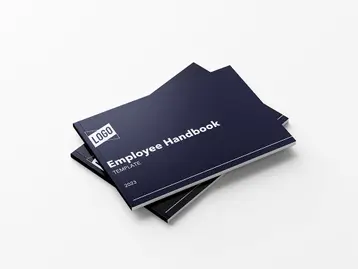
One thing that every business with employees (aka practically all businesses) will have to contend with is crafting a paid time off, or PTO, policy. In recent years, flexible paid time off policies—aka policies that allow employees to take time off when they need it for increasingly varied reasons—have stormed onto the scene. But if you’re confused by the different PTO policies, you’re not alone. It’s important to understand the facts behind different policies. We explore the reasoning behind flexible paid time off, and what you should know before rolling it out to employees.
What Is Flexible Paid Time Off and How Does It Work?
The defining characteristic of flexible paid time off policies is that, as APS Human Capital Management explains, they “bundle PTO by combining sick leave and vacation time.” This means that employees have a greater level of flexibility to choose the type of time off they need. Flexible PTO policies work particularly well for companies whose work takes place outside of the traditional 9-5 workday. However, trust is a key factor—management has to trust that employees are handling their PTO appropriately and not abusing it. One of the major benefits of flexible PTO policies is that they accommodate the increasingly diverse workforce. Not everyone celebrates the same religious holidays, and for some, birthdays matter more than national holidays. Flexible PTO policies also make room for alternative types of days off like mental health or wellness days. Remote working days are another element of many flexible paid time off policies. Though they’re not technically time off as employees are still working, it's part of the flexible work environment.
How Is Flexible PTO Different Than Unlimited PTO?
While flexible and unlimited paid time off policies are often used interchangeably, there’s an important difference between the two. As the name suggests, unlimited PTO policies are truly unlimited—employees can take as much or as little time off as they desire. But while certain flexible PTO policies can be unlimited, they aren’t inherently. Flexible PTO policies can be flexible as to the kind of time employees take off but can still pose rigid caps on the amount of time off if employers choose. One CEO ran an unlimited PTO experiment at his company a few years back and wrote about his experience for Fast Company. In the article, the CEO noted that “over the course of the year, employees took roughly the same number of vacation days under our unlimited policy as they did the year before, when we accrued paid time off (PTO) in a more traditional system.” If you’re worried that an overly flexible or unlimited policy might lead to chaos, evidence actually suggests the opposite. As an Inc.com article puts it, “just because PTO is unlimited doesn’t mean it isn’t planned… Employees still request the time off with their manager and the team works to ensure no balls are dropped.” The bottom line is that flexible PTO policies can be as flexible or as structured as you need them to be.
Considerations When Crafting a Flexible PTO Policy
For those ready to take the next step and craft a flexible PTO policy of their own, here some of the elements you will need to consider as you decide on your policy’s parameters according to Business Benefits Group:
- Personal Days. Time off for reasons that don’t fall into traditional sick or vacation days.
- Holidays. Flexible PTO should outline how national holidays are going to be handled, especially if your business doesn’t close on holidays. Be sure to consider floating holidays as well and outline a process for selecting those days off as well.
- Grieving. This type of time off is traditionally given to employees when they experience a death in their immediate family. Note that a flexible PTO policy provides an opportunity for an expanded view on bereavement in a world in which the definition of "family" is rapidly evolving.
- Leaves of Absence. If you offer extended time off, your flex policy will want to cover the circumstances under which it is granted and how it would be carried out.
Perhaps the best thing about flexible PTO policies is that they’re exactly that: flexible—for both your employees and yourself when it comes to how you want to design your policy.
This communication is for informational purposes only; it is not legal, tax or accounting advice; and is not an offer to sell, buy or procure insurance.
This post may contain hyperlinks to websites operated by parties other than TriNet. Such hyperlinks are provided for reference only. TriNet does not control such web sites and is not responsible for their content. Inclusion of such hyperlinks on TriNet.com does not necessarily imply any endorsement of the material on such websites or association with their operators.






